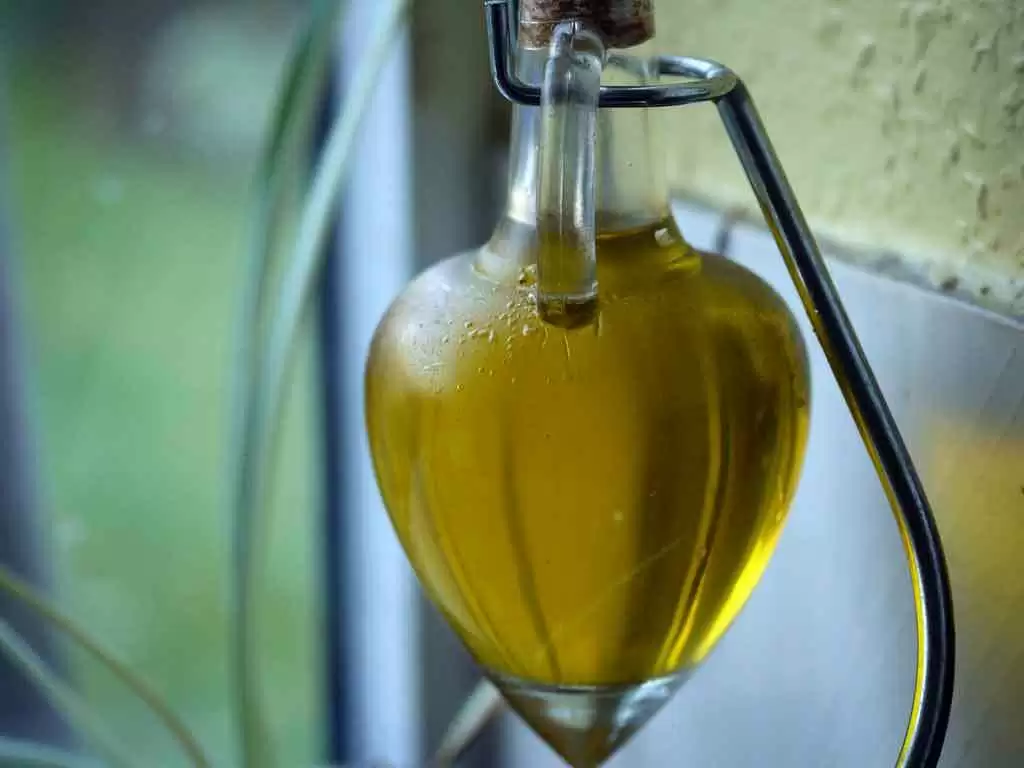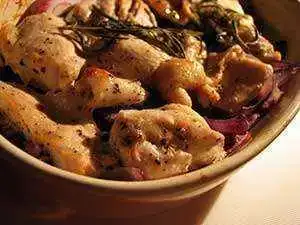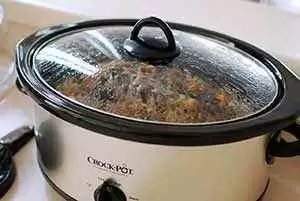
Celiac.com 10/17/2020 - Olives are fruit, which means olive oil is a fruit juice. Buying, storing and using olive oil is an art in itself.
Cooking with olive oil is like cooking with wine—an inferior one will leave an aftertaste. Do a taste test and compare the “pure” to the “extra-virgin” olive oils and you will understand the difference. The taste of a dish will be as good or as ordinary as the oil you use. Partial clues to the quality of the olive oil you are buying are supplied by the label and the price, but ultimately, the only way to determine which olive oil is right for you is to taste and compare.
Celiac.com Sponsor (A12):
If you are new to shopping for this oil, you may be surprised at the extensive variety on the grocery shelves. The flavor, color and consistency varies, depending on the type of olives used, the location where they were grown, and weather conditions during the growing season. Before examining how to use this delectable oil, consider the different varieties and labels.
“Extra Virgin Olive Oil” has less than 1% acidity and is produced by the first pressing of the olive through cold pressing. Keep in mind that “pressing” today means that the oil is now spun in a centrifuge. This oil is an unrefined natural product that has undergone very little processing. It takes approximately ten pounds of olives to yield 1 quart of olive oil.
When the “Extra” is left off the label and it reads, “Virgin Olive Oil”, it is made from olives that are slightly riper than those used in the production of extra-virgin oil so it is a grade lower in quality. The acidity level is slightly elevated to 1 ½ percent.
“Pure Olive Oil” (or just regular olive oil) comes either from the second cold pressing or the chemical extraction of the olive mash left over after the first pressing. This grade is also called commercial grade oil. Pure olive oil is much lighter in color and blander in taste than virgin olive oil. It is all-purpose oil that is fine for use in baked products. “Pure” refers to the fact that no non-olive oils are mixed in.
“Light” and “Extra Light Olive Oil” have the same number of calories as regular olive oil. “Light” merely refers to the color of the oil. It is a mixture of various olive oils from the lowest quality of olives available through chemical processing.
The color of the oil is a curious topic. What we see influences our tastes profoundly. Extra virgin olive oil fresh from the press has a rich green color and the most intense olive flavors. The olives are less ripe and will generally be richer in polyphenols (rich in tannins, lignins, and flavonoids) and slightly more bitter.
So, is it worth paying the extra money for extra virgin olive oil? Absolutely!
When cooking with olive oil, save the extra-virgin oil for salads, dressings, and vinaigrettes. You can drizzle it over slices of crusty bread or add it to mashed potatoes instead of butter. Extra virgin oil tastes great on cooked vegetables or brushed onto fish or meat before serving. People often use butter when they want a food to be flavorful. Next time, try substituting a good olive oil, then sit back and savor the difference in taste. If 2 teaspoons of butter is called for, use only 1 ½ teaspoons oil in place of the butter. For ¼ cup butter, use 3 tablespoons oil, and for 1 cup of butter, use ¾ cup oil.
When you deep fry, you need oil that has a higher “smoke point”. The extra virgin oil will smoke too quickly, so it’s best to use regular grade olive oil which has smoke point of 410 degrees.
Storing oil is another science. Always store it in an airtight container; viable options are a can, dark-colored bottle, porcelain container, or stainless steel container. Never store it in plastic or in reactive metals. Placing the container in a cool, dark place will help preserve it longer since air, heat and light cause the properties in oil to break down. The ideal temperature for storing is 57°, although a normal room temperature of 70º works if the oil is stored in an area where the temperature remains fairly constant. A kitchen cabinet located away from the stove and away from direct sunlight is fine.
Refrigeration doesn’t harm most grades of olive oil, but it is not recommended for expensive extra virgin varieties because condensation may develop in the bottle, affecting the flavor. When chilled, or in cold weather, the oil may turn cloudy and even solidify. The oil will return to its original, clear, liquid state when it reaches room temperature again.
If your oil has a buttery taste, then it’s probably rancid. As with all processed food products, there is a sell-by date on the bottle of olive oil. Ideally, this date is eighteen months after the oil is bottled. If you are refilling a smaller bottle from a large can or bottle of oil, wash the smaller container well first. Residue from previous fillings, especially if you are not using it up quickly, will contaminate the new oil you add. Besides ruining what would have been a perfectly good meal, rancid oils also contain free radicals that are potentially carcinogenic.
Doctors, newspaper and magazine articles… Everyone in the health field is telling us to limit our fat consumption. The fact is, your body needs fats. They provide raw materials that help in the control of blood pressure, blood clotting, inflammation and other bodily functions. Fat helps in the absorption and transport through the bloodstream of the fat-soluble vitamins A D, E and K. Fat insulates the body and helps you maintain healthy skin and hair. Olive oil, a mono-unsaturated fat, is the most effective in reducing your LDL levels and either elevating your HDL levels or certainly not reducing them. That being said, olive oil still has calories so your intake must necessarily be limited.
A daily dose of extra virgin olive oil may act as a natural pain reliever, according to a new study that shows that this oil contains an anti-inflammatory ingredient. Researcher Paul Breslin, PhD, of the Monell Chemical Senses Center, published his results in the September 1, 2005 issue of Nature. He found that a daily dose of extra virgin olive oil (about 1.75 ounces or 50 grams) is equivalent to about 10% of the ibuprofen dose recommended for adult pain relief and may provide substantial health benefits when taken consistently over time.
So the next time you go grocery shopping, pick up a bottle of extra virgin olive oil, then drizzle it… drizzle it on freshly cut tomatoes or into a brushetta mixture. Drizzle it over chicken and fish just before baking. Pour a little bit in a dish and add a sprinkling of Italian seasoning, a dash of pepper, and a bit of grated Parmesan cheese, then break off a piece of freshly-baked gluten-free bread and dip… oh my, what a taste sensation!
The pie crust recipe that follows proves that olive oil isn’t just for salad dressings anymore! Pure olive oil is used in this recipe because it is milder in taste than the extra virgin oil.
Gluten-Free Olive Oil Pie Crust
This recipe is from the new book I co-authored with Danna Korn: “Gluten-free Cooking for Dummies” (a sequel to Danna’s “Living Gluten-free for Dummies” book). This book is also available at Celiac.com.
Biscotti are perfect to keep on hand. They will hold several days in a plastic self-seal bag or in a covered plastic container. After the second baking, these ‘sticks’ will harden a bit, so be sure not to over bake them. If you want to live life on the wild side, soak some dried cranberries in Kaluha, and then fold them into the batter.
Ingredients:
- 2 cups sifted gluten-free flour mixture
- ¼ cup sugar
- ½ teaspoon salt
- ½ cup pure olive oil
- 4 tablespoons ice-cold water
- ½ teaspoon vanilla
- 1 tablespoon confectioners’ sugar
Directions:
In a medium bowl, sift together the flour mixture, sugar, and salt. In a small bowl, combine the oil, water, and vanilla. Pour the liquid mixture into the center of the flour mixture. With a rubber spatula, stir the dough well until it holds together. The dough will be very moist. With your hands, knead the dough until it forms a smooth ball. Sprinkle the confectioners’ sugar onto a sheet of plastic wrap. Set the ball on the sugar and turn the dough to coat it. Cover it with a second sheet of plastic wrap.
With a rolling pin, roll out the dough into an 11-inch circle. Place the dough in a greased 9-inch pie plate. Scallop the edges. Fill the pie crust with filling and bake as filling recipe directs. Double this pie crust recipe when the filling recipe calls for a top crust.








Recommended Comments